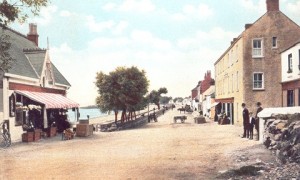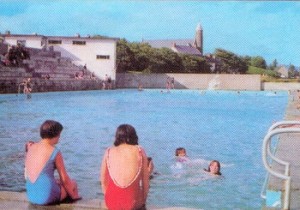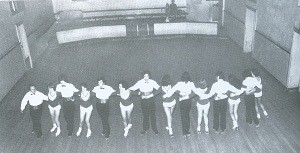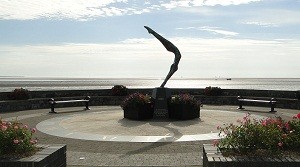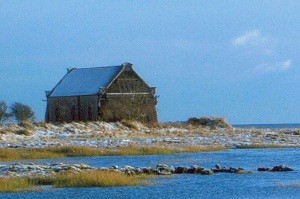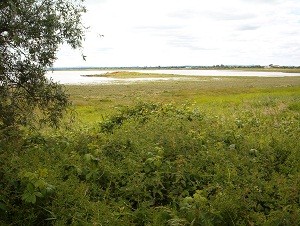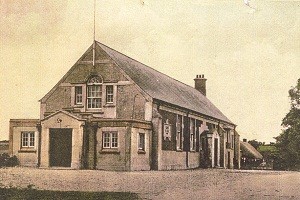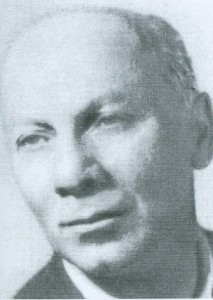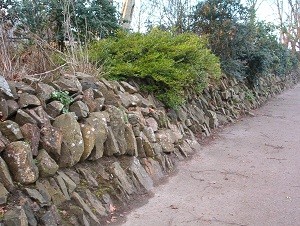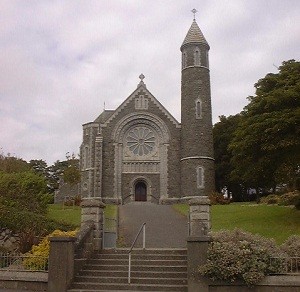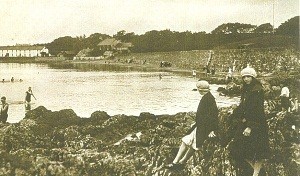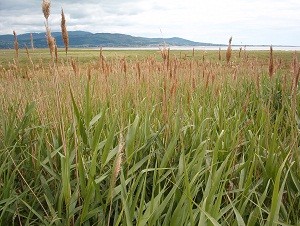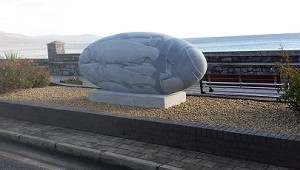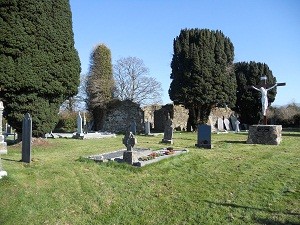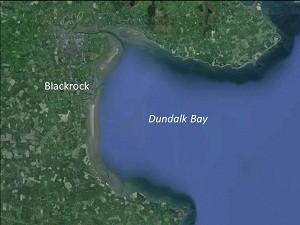THE HERITAGE OF BLACKROCK
Blackrock (Na Creagacha Dubha)
The small seaside settlement that would eventually become Blackrock was first noted in the “Book of Dundalk” in 1752. Blackrock developed as a fishing village in the early 19th century, and in 1841 the population of the village had reached 507 with 95 houses, mostly small thatched fishermen’s cottages. By 1845, visitors to the area complained of the lack of hostelries and stabling, prompting local landlord Thomas Fortescue to undertake the construction of a wall along the main beach and the building of several lodgings including the Blackrock Hotel, The Clermont Arms and The Swans. This was the beginning of Blackrock’s rapid development as a popular holiday resort, attracting visitors from all neighbouring counties as well as from Belfast and Scotland, and which continued well into the 1960s. Today Blackrock is a vibrant small town with over 3,000 inhabitants.
Blackrock’s Oral Histories
Blackrock’s Oral Histories comprises a series of audio recordings about buildings and enterprises which contributed to the village becoming one of the country’s major visitor attractions for over 100 years. It is supported on the “Gathering Heritage” website. Click here to select a topic.
Heritage Points
 Click on the link below for information on each of the heritage points on the map.
Click on the link below for information on each of the heritage points on the map.
4. Blackrock Millennium Sundial
6. The Boathouse (and the Blackrock Lifeboat)
7. The Fane Estuary and Carrig Cultra Wetlands
9. Home of Paul Vincent Carroll
11. St. Oliver Plunkett’s Church
12. The Ladies’ Beach and Sea Wall
16. Haggardstown Old Graveyard
17. Blackrock Seashore and Dundalk Bay
1. The Beach and Promenade
The original promenade along the main beach in Blackrock was created in the 1850s and comprised two walls with a walkway between. The walls served the dual purpose of providing an area to walk along the seafront, while protecting the village from flooding during high tides. The wall closest to the roadway was removed in the 1950s to allow car parking on the street to accommodate increasing visitor numbers, and the seaside wall was rebuilt with mass concrete in the now familiar “seat” shape. In 2001, following construction of the Sundial, Blackrock Tidy Towns and Louth County Council upgraded the wall to its present condition.
2. The Swimming Pool
In 1956 a scheme was adopted for the provision of an outdoor sea-water swimming pool in Blackrock at a cost of £20,000. The pool was opened in 1962 and was, at the time, the only 50 metre pool in the country. Its tiered seating could accommodate up to 800 spectators. It eventually closed in the 1980s and was demolished in 1995.
The Marine Court apartments now occupy the site, but the remains of the seaward wall of the pool (the painted depth measurements are still on display) now form part of the walkway linking the lower car park with the Priest’s Beach. Old photographs of the swimming pool and the village adorn the inner wall of the walkway. The Sea Scouts den in the car park is the only remaining part of the swimming pool buildings.
You can see some old film footage of the swimming pool on these YouTube links:
(Listen here to Harry Lee talking to Paddy Malone about the swimming pool in 2018.)
3. The Skating Hall
Blackrock’s skating hall opened in 1939, a new addition to the many leisure facilities in the village. Its popularity continued for over four decades, providing entertainment for participants and spectators alike. Like many of the other facilities in the village its attraction waned and it eventually closed in the early 1980s and was converted to commercial use. The current Village Centre complex (Centra and Bradley’s) incorporates the old building.
(Listen here to Harry Lee talking to Noel McGuinness about the skating hall in 2018.)
4. Blackrock Millennium Sundial
Blackrock Millennium Sundial is the largest sundial in a public place anywhere in Ireland. It was constructed by the local community, led by Blackrock Tidy Towns, to mark the millennium in the village. It was unveiled in 2000 and cost €120,000 to complete. A time capsule containing photographs and other documents from the millennium year in the village is buried in the foundations.
The Sundial has become a symbol of Blackrock as well as being a focal point for the centre of the village and the promenade. The bronze sculpture “Aisling” is by local artist Tanya Elliott Nyegaard. Instructions on how the Sundial works are located in the raised rose bed nearby.
(For more information on the Sundial click here)
5. The Pavilion Ballroom
Like all popular seaside resorts in Ireland in the 1950s and 1960s, Blackrock had is own dance hall. The Pavilion played host to all the Irish showbands as well and many visiting British pop stars of the 1950s and 1960s. These included Joe Dolan and the Drifters, Dickie Rock and the Miami, Brendan Boyer and the Royal, Marty Wilde, Adam Faith, Billy Fury, The Searchers, and the list goes on. By the early 1980s the dance hall era had ended and the Pavilion was eventually demolished in 2002 to be replaced by residential buildings.
(Listen here to Harry Lee talking to Noel Sharkey about the Pavilion Ballroom in 2017)
6. The Boathouse (and the Blackrock Lifeboat)
The original Blackrock lifeboat boathouse was located close to the southern end of the promenade (where the Cahir Linn apartments now stand), and was built in 1859 – one year after the “Mary Stoddart” disaster in Dundalk Bay (see heritage point no. 14). In 1900 a new boathouse was built close to the Fane estuary in order to reduce launch times. The Blackrock lifeboat service ceased in 1935, and the boathouse fell into disuse. The foreshore just to the north of the boathouse is an important wildlife habitat, especially noted for its coastal flora, and can be accessed from the southern end of the promenade.
In 2018 Blackrock Tidy Towns erected an information panel on the promenade wall to provide information about the “Mary Stoddart” tragedy of April 1858 and the subsequent establishment of the Blackrock Lifeboat and its history. Click here to view the information panel.
Click here for a link to the timeline of the last Blackrock lifeboat, the General R Dudley Blake, which is currently being reconstructed having been brought back to the village in 2018 by the Blackrock Tourism Group.
7. The Fane Estuary and Carrig Cultra Wetlands
The wetlands, saltings and mudflats at the Carrig Cultra area, at the estuary of the River Fane, form an important natural habitat for both flora and fauna, and are designated as a Special Protection Area and a Special Area of Conservation, protected at national and EU level. It is essential that they are preserved in their current natural state.
Click here for more information on Special Areas of Conservation from the National Parks and Wildlife Service, and here for more information on Special Protection Areas
8. The A.O.H. Hall
The A.O.H. (Hibernian) Hall at Cockle Hill was officially opened in 1919, having been built at a cost of £2,500. The hall, with its dance floor and gallery, was a favourite rendezvous for dancers, and a venue for theatrical performances, for several decades afterwards.
9. Home of Paul Vincent Carroll
Playwright and literary critic Paul Vincent Carroll (1900-1968) lived at Old Golf Links Road, close to the current entrance to The Links housing estate. His best known works include “Shadow and Substance” (1937), “The White Steed” (1939) and “The Wise Have Not Spoken” (1944). ‘Shadow and Substance’ was the winner of the Casement Award and the New York Drama Critics’ Circle Award in 1937. ‘The White Steed’ was rejected by the Abbey in 1939 and instead premiered in New York, where it won Drama Critics’ Circle Award. His screenplays include Saints and Sinners (1949). He settled in Kent in England in the 1940s and died there in 1968.
Find out a little more about Paul Vincent Carroll here.
10. Louth Bank Walls
These dry stone walls are a unique feature of County Louth, and are particularly prevalent in Blackrock, especially on the Rock Road. They are constructed by placing stones vertically in earth banks, and originally formed the boundaries where fields adjoined roads. Louth Bank walls are important wildlife habitats, providing homes for birds and many insect species.
A number of these walls around the village are marked by Blackrock Tidy Towns heritage plaques.
11. St. Oliver Plunkett’s Church
Building work on St Oliver Plunkett’s catholic church began in 1919, the foundation stone having been taken from Oliver Plunkett’s chapel at Ballybarrack, Dundalk. This Hiberno-Romanesque church was completed at a cost of £20,780 and the first Mass was celebrated on Christmas morning 1922. Extensive renovations were carried out to the church and its grounds in 2016. For further information about the church click here.
12. The Ladies’ Beach and Sea Wall
The sea wall along Sea Road and The Crescent was constructed during the 1850s as a defence against the high tides and flooding of previous years. The construction included the shielding of a section a beach with a higher wall so that ladies could bathe in privacy. The Ladies’ Beach is located opposite the church.
13. The Loakers Wetlands
The wetlands and mudflats at The Loakers to the north of Blackrock form an important natural wildlife area for both flora and fauna, and are designated as a Special Protection Area and a Special Area of Conservation, protected at national and EU level. It is essential that they are preserved in their current natural state to protect the delicate ecology of the area
Click here for more information on Special Areas of Conservation from the National Parks and Wildlife Service, and here for more information on Special Protection Areas
14. The “Mary Stoddart”
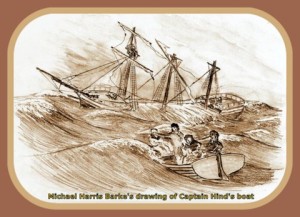
In April 1858 the “Mary Stoddart” (out of Scarborough) ran aground in Dundalk Bay off Blackrock during a prolonged storm. Seven crew members and four rescuers lost their lives during the rescue attempt, including local fisherman 25 year old James Crosbey from Main Street.
Read full details of the events as published on the 150th anniversary of the event in the Tempest’s Annual of 1908 and this account from The Scarborough Maratime Heritage Centre
During National Heritage Week 2015 local historian Noel Sharkey, together with Charlie McCarthy, delivered a lecture on the Mary Stoddart disaster at the Sundial. Click here for a copy of the informative handout from the lecture.
In 2018 Blackrock Tidy Towns erected an information panel on the promenade wall to provide information about the “Mary Stoddart” tragedy and the subsequent establishment of the Blackrock Lifeboat and its history. Click here to view the information panel.
15. “Bradáin”
“Bradáin” (Salmon) was installed on the promenade in 2013. It is made from Kilkenny blue limestone and represents the 18th century fishing origins of Blackrock village. The piece represents a shoal of salmon and was created by internationally renowned sculptor Richard Perry from Nottingham. You will sometimes see wreaths placed at the sculpture to commemorate deceased members of the fishing community or those who have lost their lives at sea, including in the waters around Blackrock.
16. Haggardstown Old Graveyard
St. Fursey, patron saint of the Parish of Haggardstown and Blackrock, is believed to have founded a monastery on this site in circa 650 A.D. A small settlement developed here dating from that time, which was later fortified by the Normans and called “Stamanaran” by them. The “church of Haggard” is mentioned in a deed of 1439 and recorded by the Royal Commission of 1540. The church was in use until 1620, after which, despite periodic repair, it gradually fell into ruin. It is not known exactly when the grounds were first used as a graveyard serving Haggardstown and the developing village of Blackrock, but the first headstones date from 1729. Prior to this, locals had been buried in either Seatown or Castletown in Dundalk. The stone wall and gates were commissioned by Canon Thomas McCrystal P.P. in 1880, and completed at a cost of £130. The cross was erected by a group of local people in the 1970s. The graveyard was in regular use until the 1930s, and is still used occasionally. (Source: Noel Sharkey)
Burial Vault
In October 1977 a burial vault was accidentally discovered in this graveyard. It lies immediately east of the church ruins, and measures just over 5 cubic metres. In the south wall of the vault was a small rectangular doorway. The 2 metre high chamber contained a considerable quantity of human bones, including skulls. The remains were in total disarray, with no trace of any coffins. It is estimated that the vault was constructed sometime during the 17th or 18th century. Local tradition holds that a “tunnel” connects the graveyard with a souterrain to the east, and runs on to the seashore at Blackrock. (Source: County Louth Archaeological and Historical Journal, 1980)
Famine Burial Plot
It is believed locally that the graveyard contains a Famine Burial Plot, reportedly located somewhere between the church ruins and the eastern boundary. There is no evidence of the existence of such a plot, and no remains have ever been discovered to substantiate the belief. Famine plots are features of many Irish graveyards of the same vintage as this one.
Angels’ Plot
In 2013 a small memorial was erected along the south-eastern boundary of the cemetery to mark the Angels’ Plot where little children were interred over the years.
Lawrence Martin M.D.
One of the more interesting graves in the cemetery is that of Lawrence Martin M.D. (no. 51 on the plan). Dr. Martin died in November 1847 from typhus contracted while attending patients in Dundalk. His gravestone reads “In commemoration of his worth as a citizen, a friend and a physician, he died … of typhus fever caught in the zealous discharge of his duties on the sick poor of the town”. He was just 32.
Yew Trees
This graveyard contains seven Yew trees. Yews have long been associated with graveyards in Ireland. The reasons for this are not clear, but there are a number of theories. One says that, because the Yew is poisonous, it is associated with death. A second holds that it was planted to keep away grazing livestock. Another claims that, because it is long lived, it symbolises immortality. The Yew can grow to a height of 20 metres, and can live for hundreds of years. The oldest Yew in Ireland, in Muckross Abbey in Killarney, has been there since 1448 at least, but the oldest Yew tree in Europe is in Fortingall churchyard in Scotland and is reputed to be 3,000 years old.
Plan of the Graves
A comprehensive plan of the graves in the cemetery, listed in alphabetical and numerical order, is displayed just inside the gate to the left. During previous restoration work a number of headstones were placed against the walls of the church ruin. Click here to download the detailed plan of the graves.
17. Blackrock Seashore and Dundalk Bay
Blackrock is situated on the shoreline of Dundalk Bay. Because the bay is so shallow the water is sometimes only barely visible at low tide. At high tide the sea reaches the promenade wall and very occasionally it can even cause some flooding on Main Street and on the approach roads to the village.
Viewed from the promenade the Cooley Mountains form a spectacular backdrop on the left (the northern boundary of the bay). The highest peak is Slieve Foye, and the furthest point seen from Blackrock is Cooley Point. To the right (the southern boundary of the bay), the land sweeps from Annagassan as far as Dunany Point. The River Fane enters Dundalk Bay to the right and flows northwards parallel to the promenade before entering the sea proper. It is dangerous to cross the river channel at any time as an incoming tide will cause the water level in the channel to rise very quickly, cutting off access from the sandbanks beyond.
Dundalk Bay is designated a Special Area of Conservation (SAC) and a Special Protection Area (SPA), protected at both national and EU level. It is one of the most important ornithological sites in Ireland and, for waders, is second in importance only to the Shannon Estuary. The Oystercatcher, Redshank, Lapwing, Curlew and Black-Headed Gull can be seen here all year round. The Dunlin, Bar-Tailed Godwit, Knot, Brent Goose and Golden Plover are winter visitors, coming here because of our milder weather. Occasionally a Little Egret can be seen at the waterline. Information panels on the promenade wall explain the bird and other sea life of the Blackrock seashore.
18. “The Cocklepickers”
 “The Cocklepickers” was installed and unveiled on the promenade in December 2018. The piece was created by local artist Micheál McKeown and comprises a woven stainless steel group of two cocklepickers from the early 1900s on a sculpted concrete base resembling the surface of Blackrock beach.
“The Cocklepickers” was installed and unveiled on the promenade in December 2018. The piece was created by local artist Micheál McKeown and comprises a woven stainless steel group of two cocklepickers from the early 1900s on a sculpted concrete base resembling the surface of Blackrock beach.
Cocklepickers were once synonymous with Blackrock and were a familiar sight on the beach. Cocklepicking can be traced back to medieval times as is evident from the middens and mounds of cockle shells still to be found in the area. During the famine (1845-1852), cockles were the only source of food for many of the indigenous families of the Blackrock area, who owe their survival to them.
“The Cocklepickers” was financed by the LEADER programme, with contributions from Louth County Council and SuperValu Fairways.
_______________________________________________________________________
Blackrock’s Oral Histories
Audio recordings about historical buildings and enterprises in Blackrock. (A Blackrock Tidy Towns heritage initiative)
Callan’s Baths – Harry Lee talks to Adrienne Boyle (2017)
The Lifeboat Tearooms – Harry Lee talks to Adrienne Boyle (2017)
The Pavilion Ballroom – Harry Lee talks to Noel Sharkey (2017)
The Blackrock Swimming Pool – Harry Lee talks to Paddy Malone (2018)
The Skating Hall – Harry Lee talks to Noel McGuinness (2018)

